In today’s fast-paced world, the importance of a well-designed small office cannot be overstated. Whether working from home or having a dedicated small space in a corporate building, a stylish and functional office is pivotal. Not only does it enhance productivity, but it also creates a more pleasant and motivating work environment. This guide will walk you through ten essential interior design tips to transform your small office into an efficient and aesthetically pleasing space. Consulting with the Architects in Islamabad Rawalpindi can provide invaluable insights and tailored solutions for those looking to balance style and functionality.
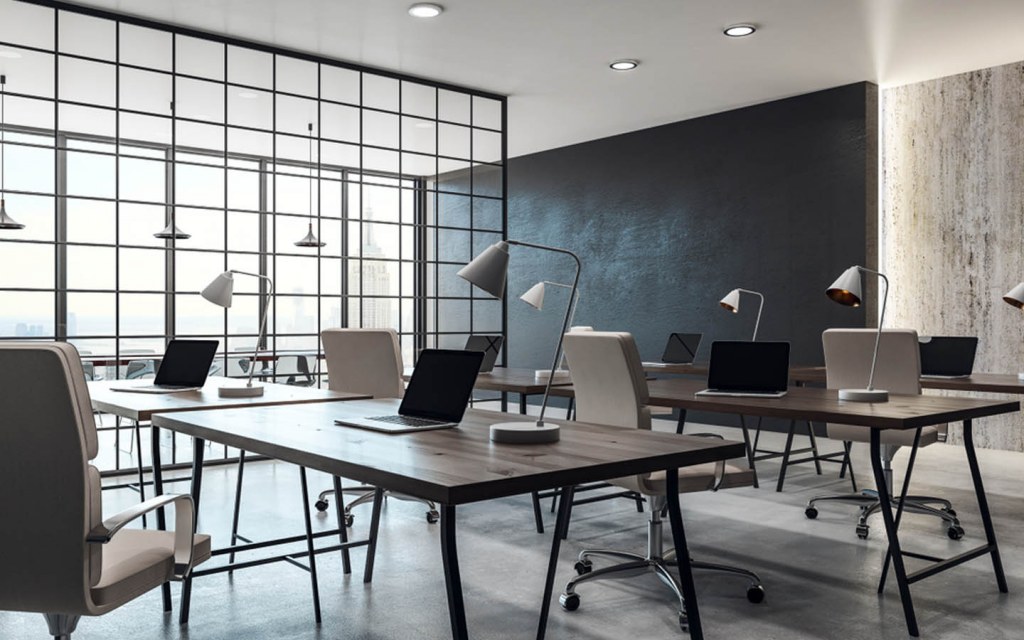
Understanding Your Space
Assess Your Office Needs
Before diving into design, it’s crucial to identify the primary functions of your office. Are you mainly using it for remote working, video conferences, or creative tasks? Understanding these needs helps tailor the space to your specific activities. For instance, a home office might prioritize comfort and a personalized touch, while a corporate small office might focus on professionalism and functionality. Also, consider the number of people using the space. A small home office might be just for you, or it might need to accommodate occasional visitors. By clearly defining your needs, you can make informed decisions about layout, furniture, and decor that enhance productivity and comfort.
Measure and Plan Layout
Measure the dimensions of your office accurately. A small space demands precision to avoid a cluttered and cramped environment. Create a detailed floor plan using online tools or consult with an interior designer who specializes in maximizing small spaces. Planning is critical to utilizing every square inch effectively, ensuring your small office is both functional and clutter-free. Consider how different areas will be used, such as a desk area for focused work, a storage zone for office supplies, and a tiny nook for relaxation or brainstorming. By visualizing the layout in advance, you can make the most of your office’s limited square footage.
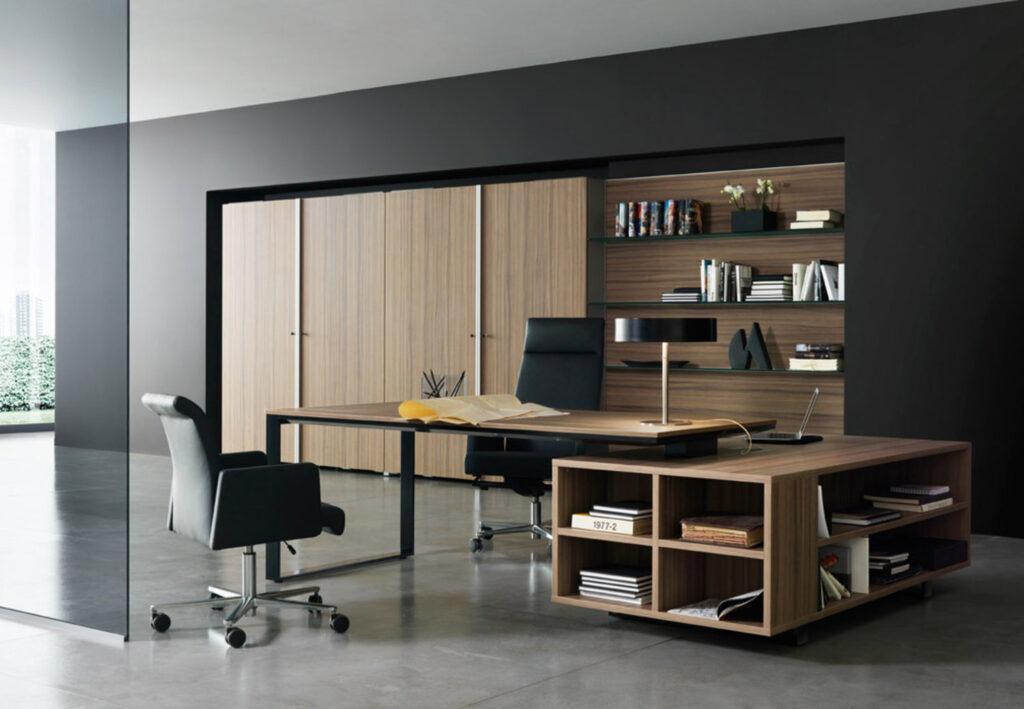
Choosing the Right Furniture
Opt for Multi-Functional Furniture
In a small office, every piece of furniture should serve multiple purposes. Choose desks with built-in storage or that can be expanded as needed. Foldable tables can also be a wise choice, providing workspace when needed and saving space when not in use. Multi-functional furniture not only maximizes utility but also helps keep the office space uncluttered and organized. For example, a desk with integrated shelves can store books, documents, and office supplies, reducing the need for additional storage furniture. This approach is essential for keeping your small space versatile and adaptable.
Prioritize Ergonomics
Long hours in the office require comfortable seating and working conditions. Invest in ergonomic chairs and desks that support proper posture and offer comfort throughout the day. Adjustable furniture can also accommodate different body types, enhancing the ergonomic benefits for all users. An ergonomic office setup can prevent strain and injury, contributing to a healthier work environment. Features to look for include adjustable seat height, lumbar support, and desks with adjustable heights. By prioritizing ergonomics, you ensure that your office is not only stylish but also conducive to long-term well-being and productivity.
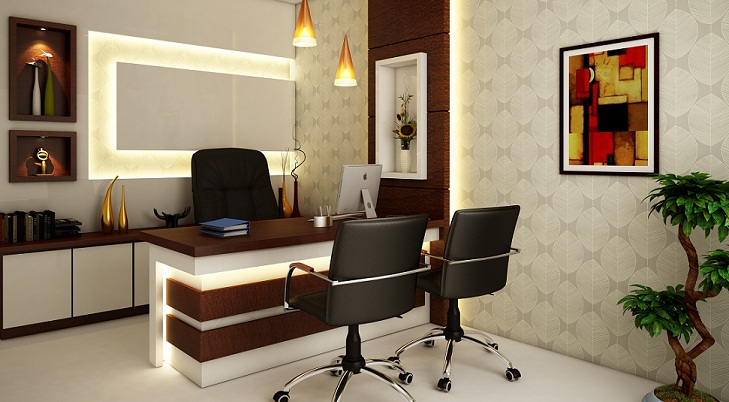
Maximizing Space
Utilize Vertical Space
The odd is odd project emphasizes creative space-saving solutions for small work areas. When floor space is limited, look up. Installing shelving units and cabinets on the walls can dramatically free up the workspace. Consider wall-mounted desks and pegboards for organizing office supplies. These solutions save space and keep essential tools within easy reach. Vertical storage maximizes the utility of your office’s height, turning walls into valuable storage areas. Floating shelves can hold books, decorative items, and even small plants, adding functionality and aesthetic appeal. By thinking vertically, you can maintain a clutter-free and efficient working space.
Incorporate Smart Storage Solutions
Under-desk storage, drawer organizers, and compact file cabinets can help maintain a tidy office. Choose storage solutions that can be easily altered or moved as your needs change. This flexibility is crucial in a small office where every bit of space counts. For example, mobile storage units can be moved around as needed, while modular storage systems can be reconfigured to accommodate different items. Utilizing innovative storage solutions keeps the workspace organized, making it easier to find what you need quickly. By reducing clutter, you create a more focused and efficient work environment.
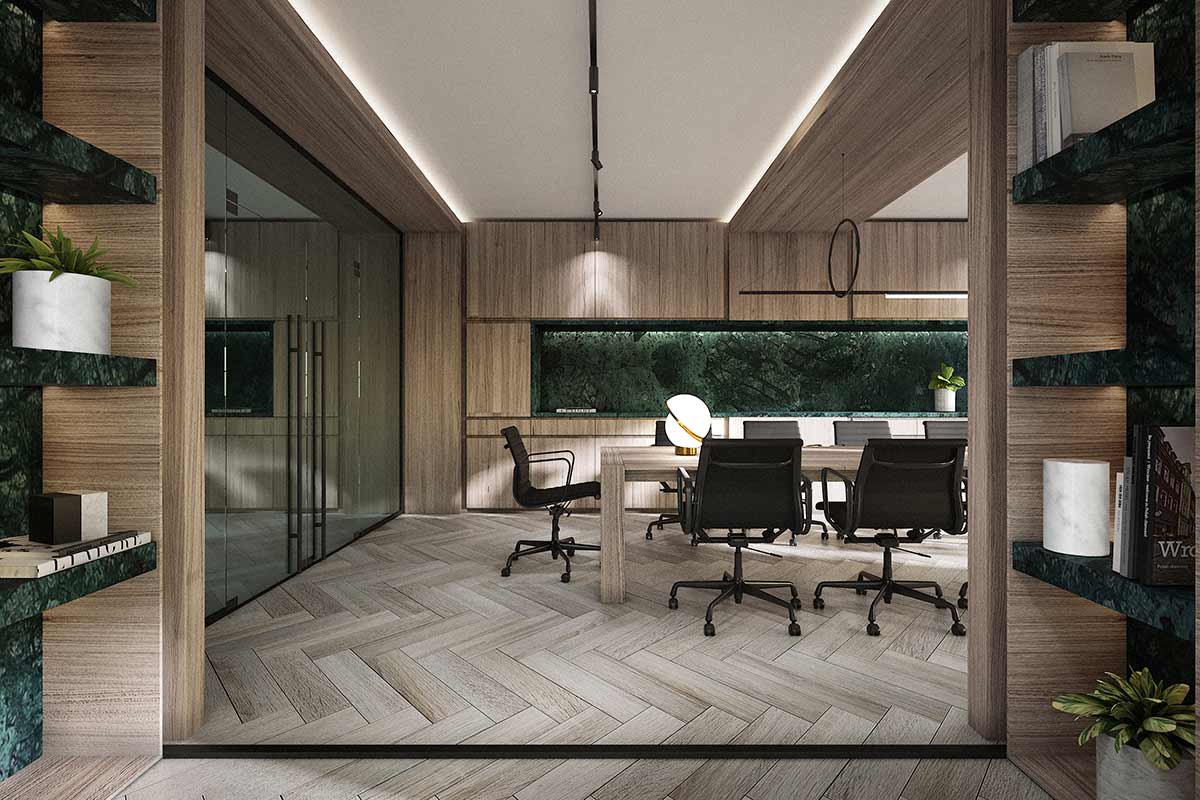
Enhancing Aesthetics
Choose a Cohesive Color Scheme
Select a color palette that enhances focus and sparks creativity. Light colors are particularly effective in small spaces, making them feel more extensive and more open. Consider calming blues, energizing yellows, or invigorating greens to create a vibrant and inspiring work environment. A cohesive color scheme ties the room together, creating a harmonious and visually appealing space. Accent colors can be used sparingly to add interest and personality. For instance, a neutral base color like white or light gray can be complemented with pops of color in accessories, artwork, and office supplies. This approach not only enhances aesthetics but also impacts mood and productivity.
Incorporate Natural Elements
Integrating plants can significantly improve air quality and reduce stress, creating a more relaxing atmosphere. Utilize natural materials like wood or bamboo to add warmth and texture to your office interior design. These elements bring a touch of nature indoors, which is especially beneficial in a small space. Plants such as succulents, peace lilies, and spider plants are low-maintenance options that thrive indoors. Natural materials in furniture and decor add an organic feel, making the space more inviting and comfortable. By incorporating nature into your design, you create a soothing and balanced work environment.
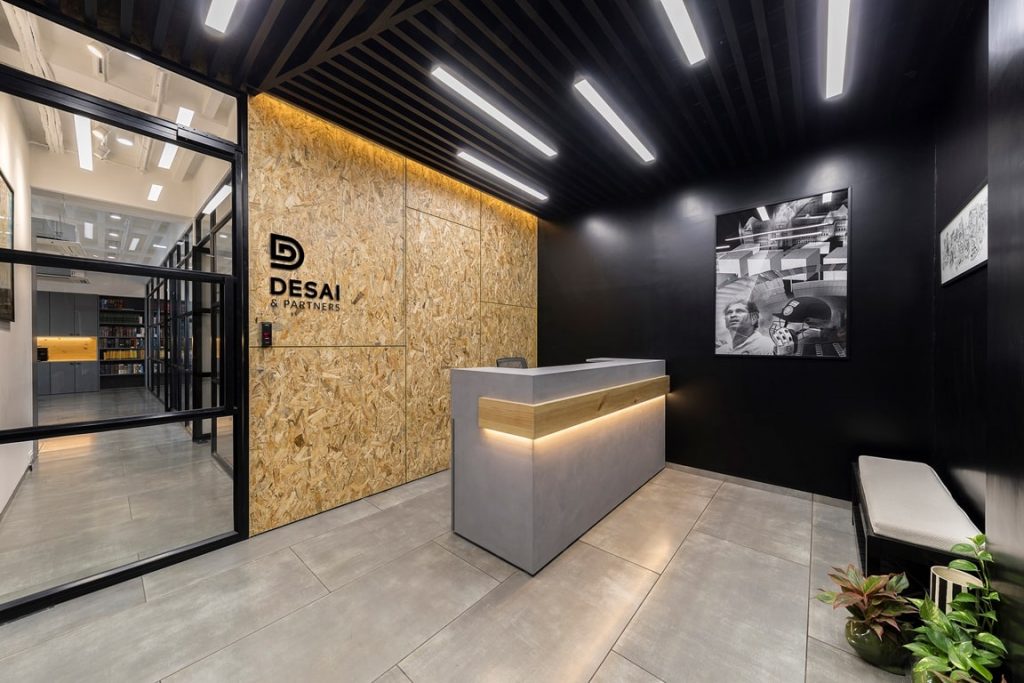
Improving Lighting
Maximize Natural Light
Arrange your desk area near windows to capitalize on natural light, which enhances mood and energy levels. Use sheer curtains to diffuse light without sacrificing privacy. Natural light makes the office feel more spacious and less confined. If natural light is limited, consider using mirrors to reflect and amplify available light, creating a brighter and more open atmosphere. Skylights or light tubes can also be installed to bring in additional natural light from above. By maximizing natural light, you enhance the overall ambiance and functionality of your small office.
Invest in Quality Artificial Lighting
Good lighting is crucial, especially in small spaces. Install a combination of ambient, task, and accent lighting to cover all aspects of office work. Adjustable LED lamps offer bright, energy-efficient lighting that can be tailored to any task, ensuring your small office is well-lit at all times. Ambient lighting provides general illumination, while task lighting focuses on specific work areas. Accent lighting adds depth and highlights critical design features. By layering different types of lighting, you create a versatile and well-lit workspace that supports various activities.
Conclusion:
A thoughtfully designed small office can work wonders for your productivity and well-being. You can create a stunning and highly functional workspace with these ten essential interior design tips. Remember, even the smallest area can become a powerhouse of efficiency with the right design approach. Investing time and effort into your office design improves aesthetics. It enhances your work environment, making it a place to thrive. For the best results, consider consulting with the Top Architects in Islamabad.
- Phone: +92 3015161981
- Email: info@oddisodd.com
FAQS:
What is a Concept of Office Design?
The concept of office design involves planning and arranging workspaces to enhance functionality, productivity, and aesthetics. It includes elements like layout, furniture, lighting, color schemes, and decor to create a conducive work environment that reflects the company’s brand and culture.
What is the Ideal Office Design?
The ideal office design should be flexible, ergonomic, well-lit with natural light, efficiently laid out, aesthetically pleasing, technology-integrated, and have spaces for collaboration and quiet work. It should support employee well-being and productivity.
What is Modern Office Design?
Modern office design emphasizes functionality, flexibility, and aesthetics. Key features include open-plan layouts, minimalist aesthetics, natural elements, integrated technology, flexible workspaces, sustainable design, and a focus on employee wellness.
How to Interior Design an Office?
- Assess Needs and Space: Determine the office’s primary functions and measure the space.
- Plan the Layout: Create a floor plan with designated areas for different activities.
- Choose Furniture: Select ergonomic and multi-functional furniture.
- Incorporate Technology: Ensure the office is equipped with the necessary technology.
- Maximize Lighting: Use natural light and a mix of ambient, task, and accent lighting.
- Select a Color Scheme: Choose colors that enhance focus and creativity.
- Add Storage Solutions: Implement smart storage to keep the office organized.
- Decorate Thoughtfully: Reflect the company’s brand and culture with decor.
- Ensure Flexibility: Design the space to be adaptable with movable furniture.
- Focus on Comfort and Wellness: Provide comfortable seating and relaxation areas.

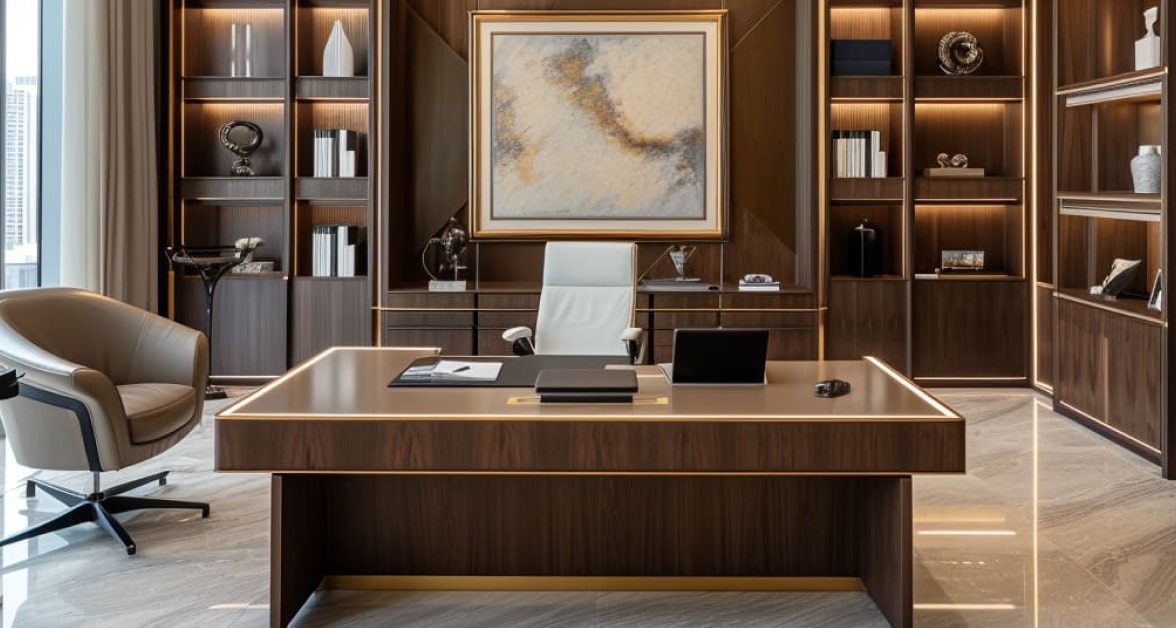


Comments are closed